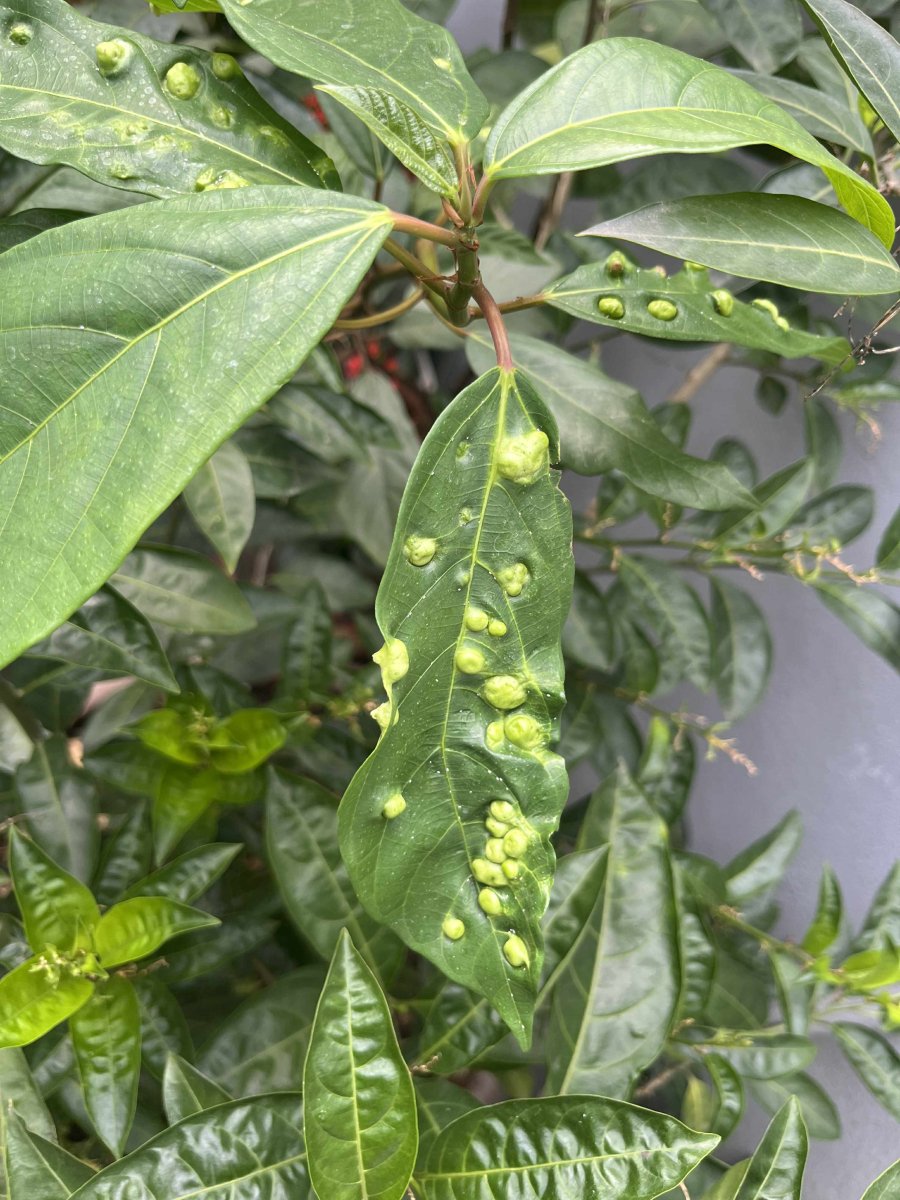The mulberry tree is cultivated not only for its shade and ornamental value but also for its versatile leaves and fruits, which find their way into everyday meals. Specifically, mulberry leaves are commonly used as a culinary herb, adding a subtle bitter note to dishes such as nem thính, nem tai, and salads. This bitterness helps balance the flavors of the ingredients, preventing cloyness.
It’s not uncommon to come across mulberry leaves with numerous wart-like bumps. These leaves are known as “blemished mulberry leaves,” “mulberry toad leaves,” or “mulberry breast leaves.” But are these leaves safe to consume?
Understanding the Bumps on Mulberry Leaves
The appearance of bumps on mulberry leaves is a natural occurrence and can be attributed to the parasitic activity of the P.syllidae species of worms. These bumps form only on new leaves growing from the buds, and by the time the bumps enlarge, the worms have long departed, leaving no eggs or parasites behind.
Interestingly, in traditional Eastern medicine, mulberry leaves with these bumps are considered more valuable than regular leaves. They are used in remedies for headaches, as a tonic for the convalescent, and to treat liver ailments, among other applications.
While the sight of bumpy mulberry leaves might be concerning, they are perfectly safe to eat. However, it is crucial to ensure that the leaves are thoroughly soaked and rinsed before consumption.

Health Benefits of Mulberry Leaves
According to Eastern medicine, mulberry leaves possess a slightly sweet and astringent taste, imparting a cooling property. They are believed to have analgesic, diuretic, blood-vitalizing, anti-inflammatory, antiseptic, and expectorant effects. In folk medicine, mulberry leaves are used to promote lactation in postpartum women and to treat numbness and rheumatism.
The World Health Organization (WHO) recognizes the glucose-lowering properties of mulberry leaves, suggesting their potential in managing diabetes. A small study conducted in 1998 found that volunteers who consumed a mulberry leaf extract exhibited lower postprandial blood glucose levels and required lower doses of insulin compared to their previous requirements.
Additionally, laboratory research indicates that mulberry leaves and their latex contain compounds that may inhibit tumor formation and exhibit anticancer properties against colorectal, cervical, breast, and liver cancers. However, further investigation is warranted in this area.
Traditional Remedies Using Mulberry Leaves
- Treating Fever and Colds: Boil 16 grams of bumpy mulberry leaves with 16 grams of lemon leaves, 6 grams of garlic, and 16 grams of turmeric. Drink the concentrated decoction. If the patient is perspiring profusely, allow the decoction to cool before consumption. Otherwise, drink it warm and bundle up to induce perspiration.
- Red, Painful Eruptions on the Back and Chest: Prepare a decoction by slicing and boiling 40 grams of bumpy mulberry leaves, 20 grams of Scrophularia ningpoensis, 20 grams of Euphorbia kansui, and 20 grams of Millettia dielsiana. Drink this decoction twice a day.
- Liver Heat and Jaundice: Boil 30 grams of bumpy mulberry leaves, 30 grams of Plantago asiatica, 20 grams of Cayratia trifolia, 50 grams of Centella asiatica, and 20 grams of Asparagus cochinchinensis. Drink the decoction as a tea substitute.
- Lactation Support: Cook 100 grams of bumpy mulberry leaves with 50 grams of young jackfruit, 50 grams of green papaya, one pig’s trotter, 100 grams of sticky rice, 10 grams of Artemisia apiacea, and 5 grams of fennel seeds. Make this into a porridge and consume twice daily for three days.
- Convalescent Tonic for Poor Appetite, Insomnia, and Weakness: Combine 200 grams of mulberry leaves, 100 grams of Dioscorea opposita, 100 grams of lotus seeds, 100 grams of Codonopsis pilosula, 100 grams of Rehmannia glutinosa, 100 grams of Polygoni multiflori, 100 grams of Leonurus japonicus, and 100 grams of ginger. Dry and grind the mulberry leaves into a powder. Steam and roast the Dioscorea opposita and grind it into a powder. Steam the Rehmannia glutinosa with ginger juice, roast it, and grind it into a powder. Boil the Leonurus japonicus to obtain a concentrated liquid. Roast the Polygoni multiflori with black beans and grind into a powder. Dry and powder the lotus seeds and Codonopsis pilosula. Mix all the ingredients with honey to form a malleable dough, then shape into small pills and dry them. Adults can take 18 pills per day.






























